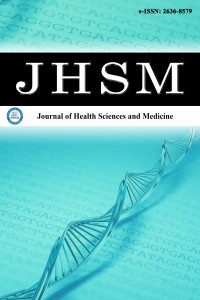1.
Fleischmann C, Scherag A, Adhikari NKJ, et al. Assessment of global incidence and mortality of hospital-treated sepsis current estimates and limitations. Am J Respir Crit Care Med. 2016;193(3):259-272. doi:10. 1164/rccm.201504-0781OC
2.
Gofton TE, Young GB. Sepsis-associated encephalopathy. Nat Rev Neurol. 2012;8:557-566. doi:10.1038/nrneurol.2012.183
3.
Gu M, Mei XL, Zhao YN. Sepsis and cerebral dysfunction: BBB damage, neuroinflammation, oxidative stress, apoptosis and autophagy as key mediators and the potential therapeutic approaches. Neurotox Res. 2021; 39:489-503. doi:10.1007/s12640-020-00270-5
4.
Krzyzaniak K, Krion R, Szymczyk A, Stepniewska E, Sieminski M. Exploring neuroprotective agents for sepsis-associated encephalopathy: a comprehensive review. Int J Mol Sci. 2023;24(13):10780. doi:10.3390/ijms241310780
5.
Sekino N, Selim M, Shehadah A. Sepsis-associated brain injury: underlying mechanisms and potential therapeutic strategies for acute and long-term cognitive impairments. J Neuroinflammation. 2022;19: 101. doi:10.1186/s12974-022-02464-4
6.
Catarina AV, Branchini G, Bettoni L, De Oliveira JR, Nunes FB. Sepsis-associated encephalopathy: from pathophysiology to progress in experimental studies. Mol Neurobiol. 2021;58:2770-2779. doi:10.1007/s12035-021-02303-2
7.
Pan S, Lv Z, Wang R, et al. Sepsis-induced brain dysfunction: pathogenesis, diagnosis, and treatment. Oxid Med Cell Longev. 2022; 2022:1328729. doi:10.1155/2022/1328729
8.
Bartošíková L, Necas J, Suchý V, et al. Protective effects of osajin in ischemia-reperfusion of laboratory rat kidney. Pharmazie. 2006;61(6): 552-555.
9.
Florian T, Necas J, Bartosikova L, et al. Effects of prenylated isoflavones osajin and pomiferin in premedication on heart ischemia-reperfusion. Biomed Pap Med Fac Univ Palacky Olomouc Czech Repub. 2006;150(1): 93-100. doi:10.5507/bp.2006.013
10.
Cigsar G, Keles ON, Can S, et al. The protective effects of osajin on ischemia/reperfusion injury to rat ovaries: biochemical and histopathological evaluation. Kafkas Univ Vet Fak Derg. 2015;21(5):753-760. doi:10.9775/kvfd.2015.13387
11.
Erol HS, Cakir A, Koc M, Yildirim S, Halici M. Anti-ulcerogenic effect of osajin on indomethacin-induced gastric damage in rats. Acta Vet Brno. 2020;89(4):391-400. doi:10.2754/avb202089040391
12.
Alhilal M, Erol HS, Yildirim S, et al. Osajin from Maclura pomifera alleviates sepsis-induced liver injury in rats: biochemical, histopathological and immunohistochemical estimation. J Taibah Univ Sci. 2023;17(1): 2201250. doi:10.1080/16583655.2023.2201250
13.
Alhilal M, Erol HS, Yildirim S, et al. Medicinal evaluation and molecular docking study of osajin as an anti-inflammatory, antioxidant, and antiapoptotic agent against sepsis-associated acute kidney injury in rats. Ren Fail. 2024;46(2):2379008. doi:10.1080/0886022X.2024.2379008
14.
Moon HI. Effect of osajin and pomiferin on antidiabetic effects from normal and streptozotocin-induced diabetic rats. Nat Prod Commun. 2014;9(12):1723-1724. doi:10.1177/1934578X1400901215
15.
Ba X, Boldogh lstvan. 8-oxoguanine DNA glycosylase 1: beyond repair of the oxidatively modified base lesions. Redox Biol. 2018;14:669-678. doi:10.1016/j.redox.2017.11.008
16.
Bahar I, Elay G, Başkol G, Sungur M, Donmez-Altuntas H. Increased DNA damage and increased apoptosis and necrosis in patients with severe sepsis and septic shock. J Crit Care. 2018;43:271-275. doi:10.1016/j.jcrc.2017.09.035
17.
Lorente L, Martín MM, González-Rivero AF, et al. Association between DNA and RNA oxidative damage and mortality in septic patients. J Crit Care. 2019;54:94-98. doi:10.1016/j.jcrc.2019.08.008
18.
Dumbuya JS, Chen X, Du J, et al. Hydrogen-rich saline regulates NLRP3 inflammasome activation in sepsis-associated encephalopathy rat model. Int Immunopharmacol. 2023;123:110758. doi:10.1016/j.intimp. 2023.110758
19.
Xu J, Lian L, Wu C, Wang X, Fu W, Xu L. Lead induces oxidative stress, DNA damage and alteration of p53, Bax and Bcl-2 expressions in mice. Food Chem Toxicol. 2008;46(5):1488-1494. doi:10.1016/j.fct.2007.12.016
20.
O’Brien MA, Kirby R. Apoptosis: a review of pro-apoptotic and anti-apoptotic pathways and dysregulation in disease. J Vet Emerg Crit Care. 2008;18(6):572-585. doi:10.1111/j.1476-4431.2008.00363.x
21.
Westphal D, Dewson G, Czabotar PE, Kluck RM. Molecular biology of Bax and Bak activation and action. Biochim Biophys Acta Mol Cell Res. 2011;1813(4):521-531. doi:10.1016/j.bbamcr.2010.12.019
22.
Gyawali B, Ramakrishna K, Dhamoon AS. Sepsis: the evolution in definition, pathophysiology, and management. SAGE Open Med. 2019;7: 1-13. doi:10.1177/2050312119835043
23.
Dunkern TR, Fritz G, Kaina B. Ultraviolet light-induced DNA damage triggers apoptosis in nucleotide excision repair-deficient cells via Bcl-2 decline and caspase-3/-8 activation. Oncogene. 2001;20(42):6026-6038. doi:10.1038/sj.onc.1204754
24.
Fang J, Lian Y, Xie K, Cai S, Wen P. Epigenetic modulation of neuronal apoptosis and cognitive functions in sepsis-associated encephalopathy. Neurol Sci. 2014;35:283-288. doi:10.1007/s10072-013-1508-4
25.
Deniz GY, Geyikoglu F, Altun S. The regulatory effects of pomiferin dietary on nickel-induced hepatic injury in Sprague-Dawley rats; action mechanisms and signaling pathways. Toxicol Mech Methods. 2024;34(5): 484-494. doi:10.1080/15376516.2023.2301667

